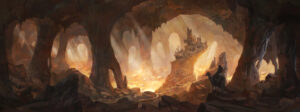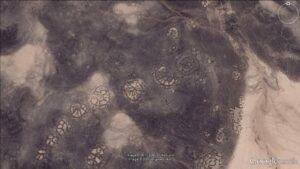Today, we know that mercury is one of the most poisonous substances out there. To ancient civilizations, however, it held great importance. It kept one young, beautiful, and possibly immortal. Curiously enough, archaeologists might have identified another use for mercury in Chinese and Mesoamerican cultures.
The name ‘mercury’ carries several connotations throughout history. In Roman mythology, Mercury was the god of communication and escorted new souls to the underworld. Elemental mercury, on the other hand, supposedly provided anti-aging benefits and optimal health, despite clear evidence to the contrary. It certainly escorted users to premature death. One such case is the first Emperor of China.
Mercury rivers in China
The legendary First Emperor of unified China, Qin Shi Huang, began his reign at just 13 years old. Despite his youth, he began seriously preparing for his death by ordering the construction of a magnificent mausoleum measuring 6.3 square kilometres. It took approximately 38 years to complete, with an insane workforce of 700,000 prisoners, slaves, and other social outcasts.
He wished to build a microcosm of his entire legacy on earth to take with him into the afterlife. This included 8,000 terracotta soldiers (horses and all), a palace, a pyramid, and a burial mound containing his tomb. This tomb has never been opened for several reasons. First, the air might damage whatever may lie inside. Second, it may contain toxic levels of mercury.

Xi’an’s famous Terracotta Army, part of the mausoleum of the First Qin Emperor. Photo: DnDavis/Shutterstock
No liquid mercury in nature
Mercury was nothing new in China. However, you don’t find liquid mercury in nature. Rather, you find it in something called cinnabar. Cinnabar is mercury sulfide, a red ore from which mercury is extracted. It has many uses, including lacquerware, jewelry, cosmetics, and paint. Heat and condense cinnabar, and you get the jiggly liquid form of mercury we know today.
Although archaeologists have not opened the tomb, they managed to discover what’s inside by sending in probes and analyzing soil samples. In the 1980s, they found high concentrations of liquid mercury in the boreholes of the soil around the tomb. This likely indicates that the substance played a big role in Qin’s burial. They believe the body is lying in large bodies of liquid mercury, like big puddles or even a river! They estimated that the tomb has over 100 tons of it.
The 2nd century BC historian Sima Quan described the tomb as having 100 rivers of mercury. Supposedly, this mimicked the Yellow and Yangtze rivers as well as the sea itself. But was it just for funerary art purposes? No one fully knows why the Emperor is buried amid mercury unless it is Qin’s own personal obsession with the substance.

Statue of Mercury. Photo: Gilmanshin/Shutterstock
Like many kings, Qin Shi Huang obsessed over immortality. He searched high and low for the answer to eternal life. He sent men out on suicidal sea voyages and ordered his personal doctors to experiment with dangerous alchemical concoctions. His ambition for eternity killed him.
What did he die from? Ironically, mercury poisoning. However, he did not know this at the time. Did he see rivers of mercury as a symbol of his immortal legacy?
Mercury in Mayan temple?
Excavations in the New World also provided archaeologists with a fair share of startling discoveries. Archaeologist Sergio Gomez uncovered large deposits of liquid mercury while digging at the Pyramid of the Feathered Serpent in Teotihuacan, Mexico. Mesoamericans, particularly the Maya, used cinnabar in their everyday life. The bright red pigment had aesthetic, architectural, and religious applications. Yet mercury in its liquid form only turned up recently.

Pyramid of the Feathered Serpent. Photo: Andreas Wolochow/Shutterstock
Gomez made the discovery in a tunnel underneath the pyramid. He hypothesizes that a special room, possibly a royal tomb, lies behind the end of this tunnel. This tunnel also housed pyrite mirrors and shiny metal spheres. This suggests a noticeable pattern of reflective materials.
Mirrors and reflections played a fundamental role in Mesoamerican civilizations. They served as portals to the divine realm and a means of divining future events. Maybe the mercury served to usher into the underworld whoever might be buried behind the tunnel. Gomez even suggests that the tunnel might be a model of the underworld itself.
Archaeologists have also found traces of liquid mercury in sites throughout Honduras and Guatemala, which suggests that this may have been a widespread practice.
Conclusion
Going back to the Roman god Mercury, who escorted souls to the underworld, we see a clear linkage between mercury and death (besides its toxic characteristics). Across cultures, mercury seemed to serve a religious purpose. Its presence in tombs and its mimicking of landscapes in the spiritual realm and in ours shows the transition everyone must go through when they die.






